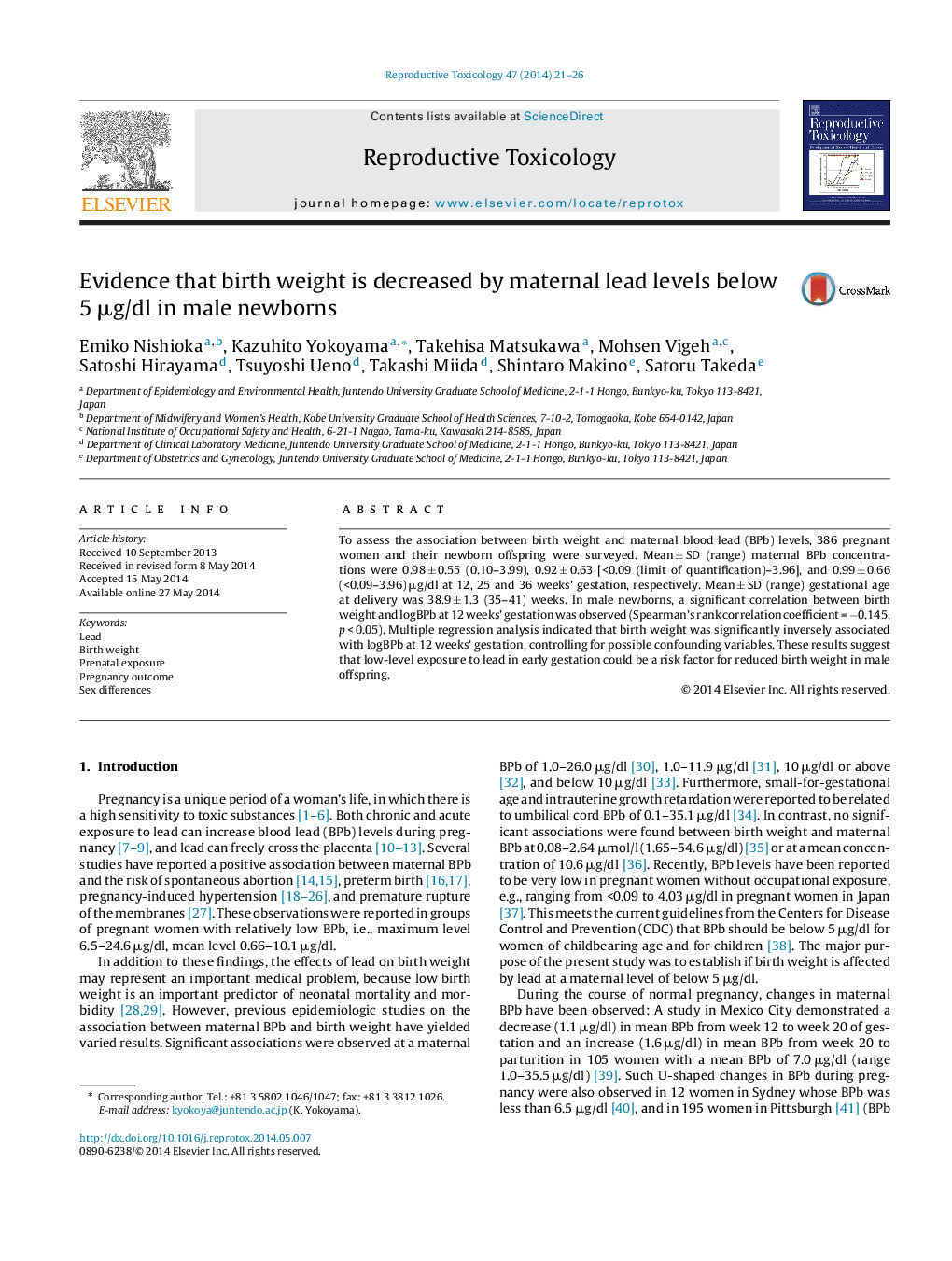| Article ID | Journal | Published Year | Pages | File Type |
|---|---|---|---|---|
| 2593519 | Reproductive Toxicology | 2014 | 6 Pages |
•Birth weight was related to maternal blood lead (BPb) at the first-trimester in male newborns but not in females ones.•Maternal BPb levels were below 5.0 μg/dl with an average less than 1.0 μg/dl.•Male offspring seems more susceptible to lead than female ones.
To assess the association between birth weight and maternal blood lead (BPb) levels, 386 pregnant women and their newborn offspring were surveyed. Mean ± SD (range) maternal BPb concentrations were 0.98 ± 0.55 (0.10–3.99), 0.92 ± 0.63 [<0.09 (limit of quantification)–3.96], and 0.99 ± 0.66 (<0.09–3.96) μg/dl at 12, 25 and 36 weeks’ gestation, respectively. Mean ± SD (range) gestational age at delivery was 38.9 ± 1.3 (35–41) weeks. In male newborns, a significant correlation between birth weight and logBPb at 12 weeks’ gestation was observed (Spearman's rank correlation coefficient = −0.145, p < 0.05). Multiple regression analysis indicated that birth weight was significantly inversely associated with logBPb at 12 weeks’ gestation, controlling for possible confounding variables. These results suggest that low-level exposure to lead in early gestation could be a risk factor for reduced birth weight in male offspring.
